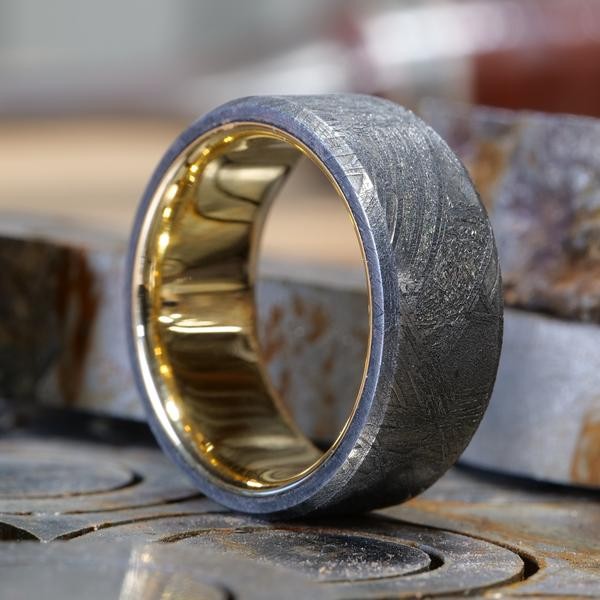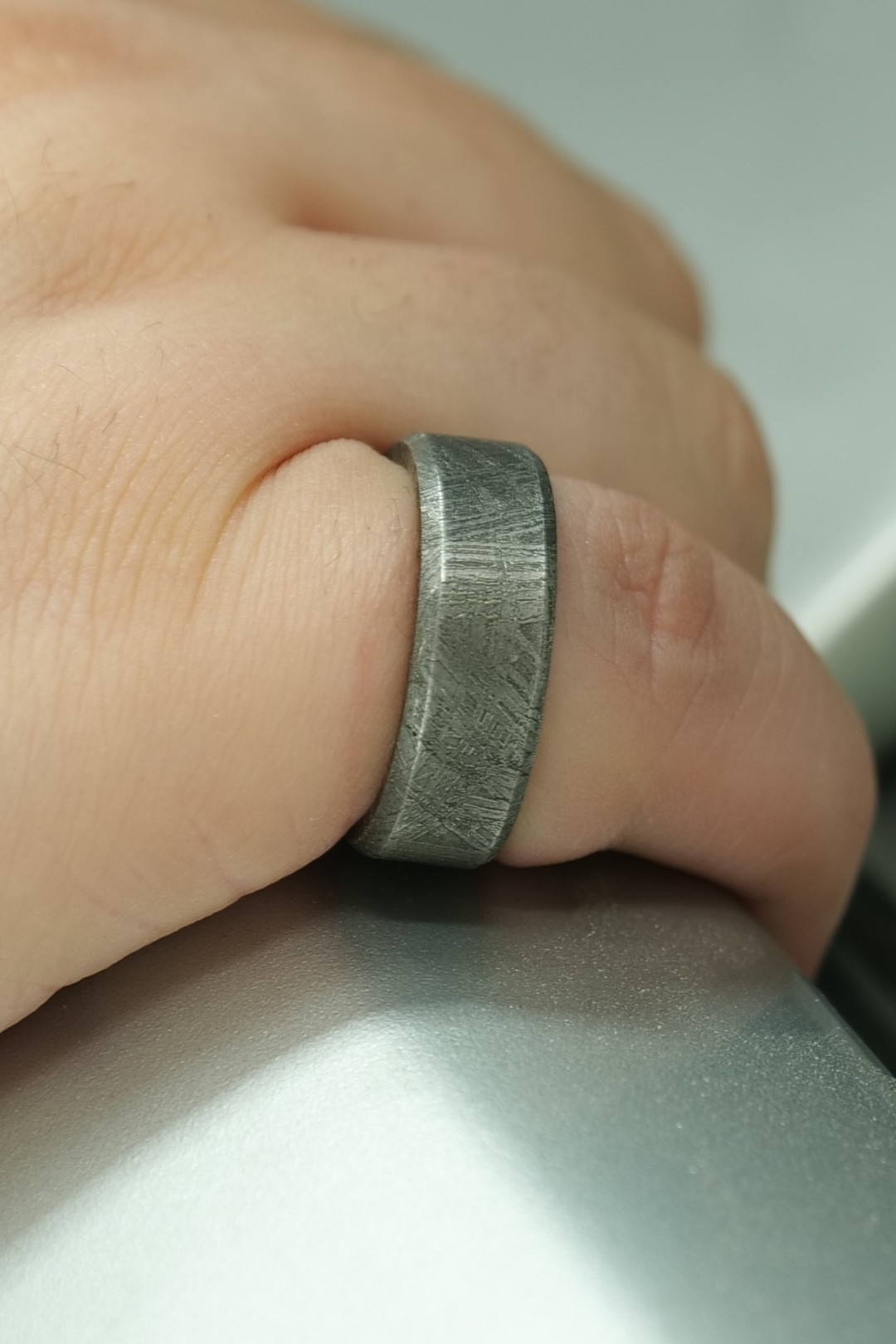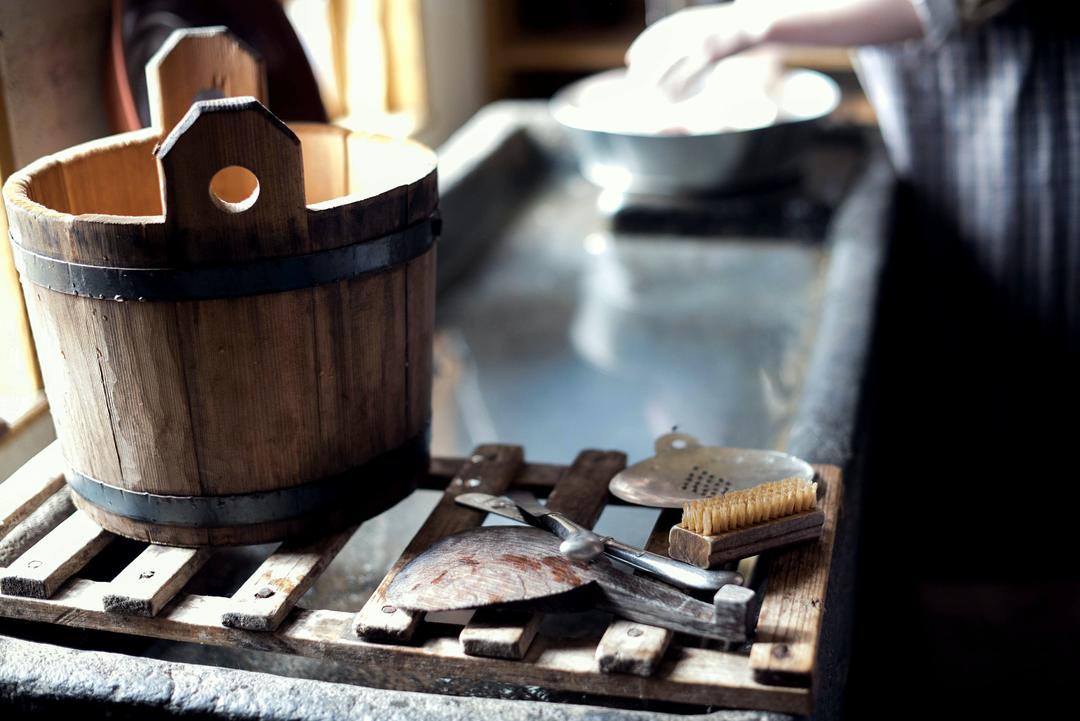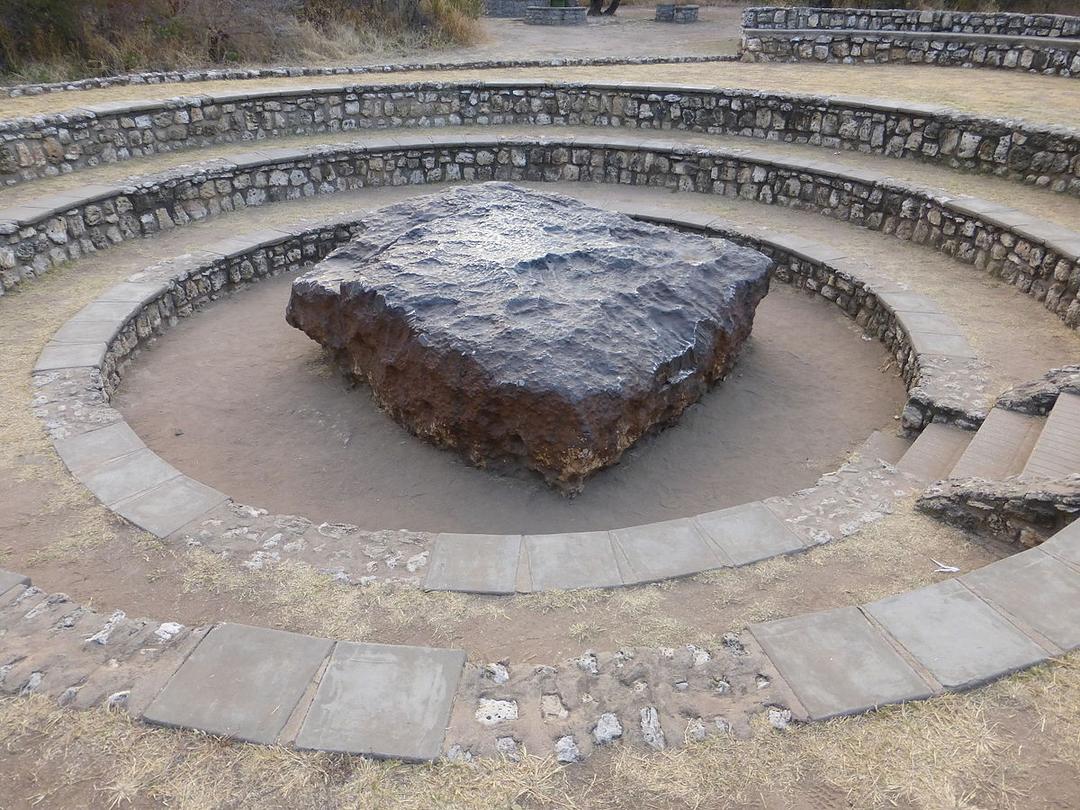How to Care for Meteorite Jewelry

How to Care for Meteorite Jewelry
The extraterrestrial and outer space in general truly has brought a sense of awe to humanity for centuries that up to this day, many scholars and non-scholars alike marvel at its very concept. But the truth is, only an incredibly miniscule amount of people get to participate in experiencing life outside of earth, and that’s totally fine! As the saying goes, “if you can’t go to outer space, make outer space go to you”, and thankfully, this is something that can absolutely be done. Meteorites for example have been used for centuries as ornaments and jewelry and continue to be used as such, that having a piece of the cosmos on your day-to-day outfits is entirely possible. Should you ever find yourselves in possession of something so special, we have provided a quick guide on how to care for your meteorite jewelry.
What is Meteorite Jewelry?
Before actually going through the details of meteorite jewelry maintenance, a little extra info on meteorites wouldn’t hurt anybody! Meteorites are pieces of asteroids that have not only penetrated the earth’s atmosphere, but have also actually made it to the surface of the earth without burning up completely. These aren’t to be confused with meteors--which do burn up upon entering the earth's atmosphere--and meteoroids which are simply asteroids that float in space. They’re all actually the same thing, the name just changes depending on where they are in their journey.
Meteorite jewelry is exactly that. History tells us that due to its celestial origins and magnetism, it was believed that meteorites possessed magical qualities. Scientists have discovered that even ancient Mesopotamians have used meteorite beads and pendants and also believed that the presence of nickel helped purify the blood of those who don these ornaments. While these notions are no longer widely believed, meteorites being used as jewelry is a practice that continues up to this day. Jewelers have made use of different types of meteorites - either Gibeon, Muonionalusta, and Seymchan meteorites - as meteorite rings or even as inlays for its impeccably unique patterns.
Before actually going through the details of meteorite jewelry maintenance, a little extra info on meteorites wouldn’t hurt anybody! Meteorites are pieces of asteroids that have not only penetrated the earth’s atmosphere, but have also actually made it to the surface of the earth without burning up completely. These aren’t to be confused with meteors--which do burn up upon entering the earth's atmosphere--and meteoroids which are simply asteroids that float in space. They’re all actually the same thing, the name just changes depending on where they are in their journey.
Meteorite jewelry is exactly that. History tells us that due to its celestial origins and magnetism, it was believed that meteorites possessed magical qualities. Scientists have discovered that even ancient Mesopotamians have used meteorite beads and pendants and also believed that the presence of nickel helped purify the blood of those who don these ornaments. While these notions are no longer widely believed, meteorites being used as jewelry is a practice that continues up to this day. Jewelers have made use of different types of meteorites - either Gibeon, Muonionalusta, and Seymchan meteorites - as meteorite rings or even as inlays for its impeccably unique patterns.
How Do We Know Its Real?
Its only normal for you to be skeptical over the authenticity of meteorite, and there are definitely other ways besides approaching a professional like us to tell whether the stone you have is the real meteorite. Here are a few things to look for when deciphering the authenticity of meteorite. Take note that while some of these may not be definitive tests, they generally are a step in the right direction!
- One sign that what you have may be a real meteorite would be its density. Meteorites are generally heavier than they look due to the presence of metallic iron and other dense materials.
- Authentic Meteorite may also stick to magnets. It’s iron content may vary but they should at least attract any proper magnet, and when powerful enough, might just be quite difficult to separate.
- Seeing your meteorite rust over time is not a sign that you’ve been hoodwinked into buying a low quality stone, but rather enforces its authenticity. Again, because of the presence of iron, rusting over time is a common occurrence with authentic meteorites!
- Many meteorites, especially in jewelry, visibly have a cross-section pattern formed by its molecular structure that are impossible to replicate. Investigating if what you have is a fake meteorite by checking the pattern, known as the Widmanstätten pattern, should indicate the authenticity of your meteorite.
Its only normal for you to be skeptical over the authenticity of meteorite, and there are definitely other ways besides approaching a professional like us to tell whether the stone you have is the real meteorite. Here are a few things to look for when deciphering the authenticity of meteorite. Take note that while some of these may not be definitive tests, they generally are a step in the right direction!
- One sign that what you have may be a real meteorite would be its density. Meteorites are generally heavier than they look due to the presence of metallic iron and other dense materials.
- Authentic Meteorite may also stick to magnets. It’s iron content may vary but they should at least attract any proper magnet, and when powerful enough, might just be quite difficult to separate.
- Seeing your meteorite rust over time is not a sign that you’ve been hoodwinked into buying a low quality stone, but rather enforces its authenticity. Again, because of the presence of iron, rusting over time is a common occurrence with authentic meteorites!
- Many meteorites, especially in jewelry, visibly have a cross-section pattern formed by its molecular structure that are impossible to replicate. Investigating if what you have is a fake meteorite by checking the pattern, known as the Widmanstätten pattern, should indicate the authenticity of your meteorite.
Its only normal for you to be skeptical over the authenticity of meteorite, and there are definitely other ways besides approaching a professional like us to tell whether the stone you have is the real meteorite. Here are a few things to look for when deciphering the authenticity of meteorite. Take note that while some of these may not be definitive tests, they generally are a step in the right direction!
- One sign that what you have may be a real meteorite would be its density. Meteorites are generally heavier than they look due to the presence of metallic iron and other dense materials.
- Authentic Meteorite may also stick to magnets. It’s iron content may vary but they should at least attract any proper magnet, and when powerful enough, might just be quite difficult to separate.
- Seeing your meteorite rust over time is not a sign that you’ve been hoodwinked into buying a low quality stone, but rather enforces its authenticity. Again, because of the presence of iron, rusting over time is a common occurrence with authentic meteorites!
- Many meteorites, especially in jewelry, visibly have a cross-section pattern formed by its molecular structure that are impossible to replicate. Investigating if what you have is a fake meteorite by checking the pattern, known as the Widmanstätten pattern, should indicate the authenticity of your meteorite.
Here are a few things to not look for in your meteorite:
- Real meteorites, because of their extraterrestrial origins, almost never have a perfectly spherical shape. Meteorites are most commonly found in varying shapes and sizes. Finding a round “meteorite” should definitely be a cause of suspicion.
- Meteorites must also don't have bubbles and holes on their surface. It is a common misconception that these extraterrestrial rocks have a molten look, when really, true meteorites have hole-less exteriors due to their surfaces being burned upon entering the earth’s atmosphere.
Is It Safe to Wear?
It is understandable that people worry about the safety of wearing meteorites - like meteorite earrings, meteorite necklaces or wedding bands - as they quite literally come from outer space. The short answer is, yes, they are safe to wear, as long as these meteorites are not fresh, which is most likely the case. Only freshly fallen chunks of meteorites are dangerous, as they release radioactive emissions, but these quickly die out the longer they are within the atmosphere.
The presence of nickel, however, may cause allergic reactions specifically to people with metal hypersensitivities. People who are allergic to gold will most likely be allergic to meteorites as well, and if this is the case, you may request that there be an added protective layer to the meteorite so as not to trigger any allergies, but these are generally not recommended as they eventually wear off.
It is understandable that people worry about the safety of wearing meteorites - like meteorite earrings, meteorite necklaces or wedding bands - as they quite literally come from outer space. The short answer is, yes, they are safe to wear, as long as these meteorites are not fresh, which is most likely the case. Only freshly fallen chunks of meteorites are dangerous, as they release radioactive emissions, but these quickly die out the longer they are within the atmosphere.
The presence of nickel, however, may cause allergic reactions specifically to people with metal hypersensitivities. People who are allergic to gold will most likely be allergic to meteorites as well, and if this is the case, you may request that there be an added protective layer to the meteorite so as not to trigger any allergies, but these are generally not recommended as they eventually wear off.
Widmanstätten Pattern
The Widmanstätten pattern is something that is exclusively unique to the meteorite. Discovered by an Austrian geologist named Alois von Widmanstätten in 1808, this distinct pattern appears as an interweaving cross-section of kamacite and taenite after being etched by a weak acid and have gone through a slow cooling. No two patterns are ever the same, and each meteorite that displays this pattern are as infinitesimally unique as the next that even scientists cannot replicate. Owning a piece of meteorite jewelry that features even the slightest bit of the Widmanstätten pattern automatically guarantees that your meteorite ring not only is out of this world, but also truly one of a kind.
The Widmanstätten pattern is something that is exclusively unique to the meteorite. Discovered by an Austrian geologist named Alois von Widmanstätten in 1808, this distinct pattern appears as an interweaving cross-section of kamacite and taenite after being etched by a weak acid and have gone through a slow cooling. No two patterns are ever the same, and each meteorite that displays this pattern are as infinitesimally unique as the next that even scientists cannot replicate. Owning a piece of meteorite jewelry that features even the slightest bit of the Widmanstätten pattern automatically guarantees that your meteorite ring not only is out of this world, but also truly one of a kind.
The Widmanstätten pattern is something that is exclusively unique to the meteorite. Discovered by an Austrian geologist named Alois von Widmanstätten in 1808, this distinct pattern appears as an interweaving cross-section of kamacite and taenite after being etched by a weak acid and have gone through a slow cooling. No two patterns are ever the same, and each meteorite that displays this pattern are as infinitesimally unique as the next that even scientists cannot replicate. Owning a piece of meteorite jewelry that features even the slightest bit of the Widmanstätten pattern automatically guarantees that your meteorite ring not only is out of this world, but also truly one of a kind.
Meteorite Jewelry Maintenance
Owning meteorite jewelry definitely does come with its own maintenance rules. As we all know, meteorite jewelry is prone to rust because of the presence of iron, but aside from that, it is also very much likely that your jewelry will burnish, making the Widmanstätten pattern significantly less visible. We would like to reiterate that these things occur not because of poor quality, but simply because it is part of their nature. Going to a jeweler like Patrick Adair Designs and having your jewelry professionally re-polished and re-etched is certainly one way to maintain your ring, but there are other alternative methods to polish and clean your rings even at home. Until then, here are some tips to keep in mind to prevent your beautiful meteorite jewelry from rusting and burnishing anytime soon.
Owning meteorite jewelry definitely does come with its own maintenance rules. As we all know, meteorite jewelry is prone to rust because of the presence of iron, but aside from that, it is also very much likely that your jewelry will burnish, making the Widmanstätten pattern significantly less visible. We would like to reiterate that these things occur not because of poor quality, but simply because it is part of their nature. Going to a jeweler like Patrick Adair Designs and having your jewelry professionally re-polished and re-etched is certainly one way to maintain your ring, but there are other alternative methods to polish and clean your rings even at home. Until then, here are some tips to keep in mind to prevent your beautiful meteorite jewelry from rusting and burnishing anytime soon.
- Removing your jewelry prior to activities that could potentially or directly expose it to rust is one of the most important things to remember. Swimming, doing the dishes, or any kind of long exposure to moisture will most likely harm your jewelry, as well as exposing it to any harsh chemicals and acidic solutions.
- Avoid having your ring on when doing vigorous activities that may heavily burnish your ring. Rock climbing, weightlifting, and repeatedly hitting your ring against hard surfaces are no-no’s, while yard work is acceptable but requires caution.
- When storing your jewelry, ensure that they are kept safe and dry in a Ziploc or any sealed container to, again, prevent it from being exposed to moisture. The Premium PAD Protective Case is a great way to store your Meteorite Ring as well.
If you find yourselves at a point where you notice rust forming on your ring or your pattern is no longer as visible, feel free to follow these steps:
You will need:
- WD-40 or rubbing alcohol
- Toothbrush
- Soft cloth
- Ring wax or gun oil
- Cotton swab (optional)
Instructions:
Using WD-40: Spray a small amount of WD-40 on a soft cloth and use it to coat your ring.
Using alcohol: An alternative would be to use your rubbing alcohol on a cotton swab and rub your ring thoroughly.
- Take your toothbrush and carefully scrub on either the WD-40 or the rubbing alcohol on the rusty areas.
- Using WD-40: Leave some residue of WD-40 in your soft cloth and allow your ring to absorb the residue overnight.
- Using alcohol: Dry your ring with a cloth and let it air dry for 20-30 minutes.
- Take your ring wax or gun oil and carefully apply a small amount on your ring.
Muoninalusta: The 4.5 Billion Year Old Meteorite
Known to be one of the oldest discovered meteorites, the muonionalusta meteorite has witnessed four ice ages and is properly recognized as the artifact it deserves to be, being displayed in various Natural History museums all over the world. Its continuing survival after billions of years has no longer made the muonionalusta meteorite just an ancient representation of the wonders of outer space, but also carries with it now the entire history of the earth. The muonionalusta meteorite has seen humanity flourish, fail, and flourish once again, and will continue to do so until possibly the end of time. The memories of the cosmos and humanity as a whole is contained in this precious stone and has been made readily available for you to carry either as classic pendants or as exquisite rings over at Patrick Adair Designs, where we use muonionalusta meteorite fragments to give your pieces of jewelry the flair of historical and scientific substance in addition to elegance and beauty.
Known to be one of the oldest discovered meteorites, the muonionalusta meteorite has witnessed four ice ages and is properly recognized as the artifact it deserves to be, being displayed in various Natural History museums all over the world. Its continuing survival after billions of years has no longer made the muonionalusta meteorite just an ancient representation of the wonders of outer space, but also carries with it now the entire history of the earth. The muonionalusta meteorite has seen humanity flourish, fail, and flourish once again, and will continue to do so until possibly the end of time. The memories of the cosmos and humanity as a whole is contained in this precious stone and has been made readily available for you to carry either as classic pendants or as exquisite rings over at Patrick Adair Designs, where we use muonionalusta meteorite fragments to give your pieces of jewelry the flair of historical and scientific substance in addition to elegance and beauty.
































